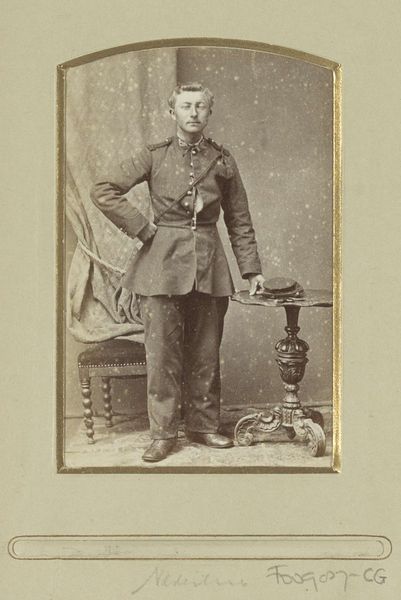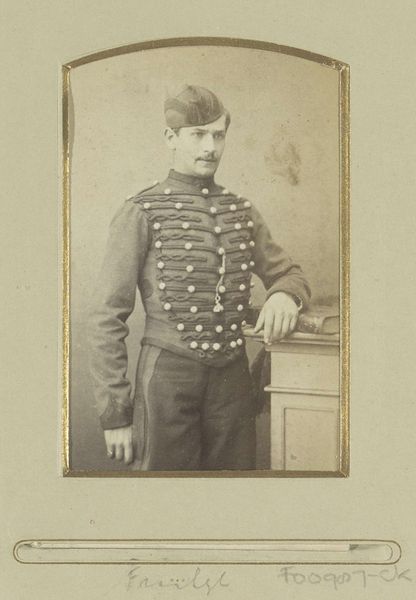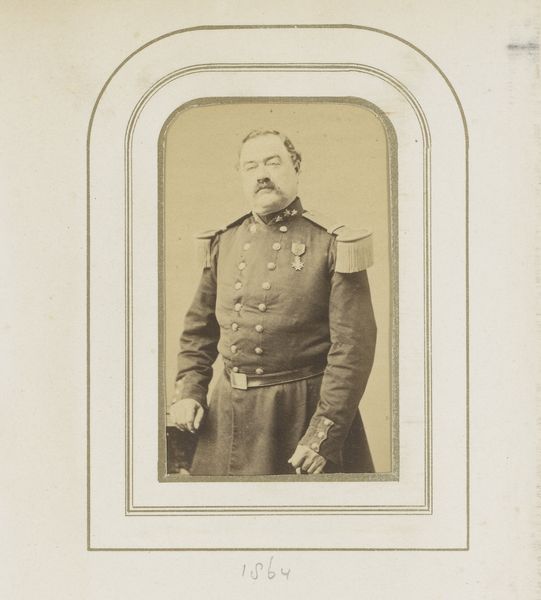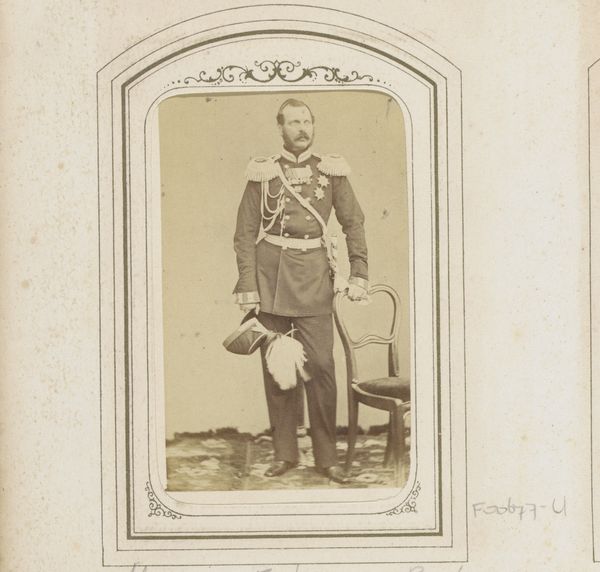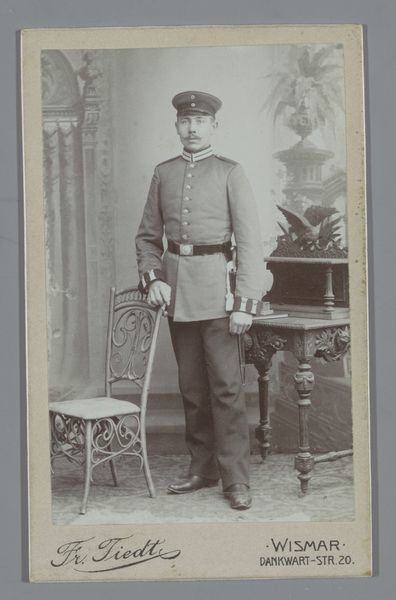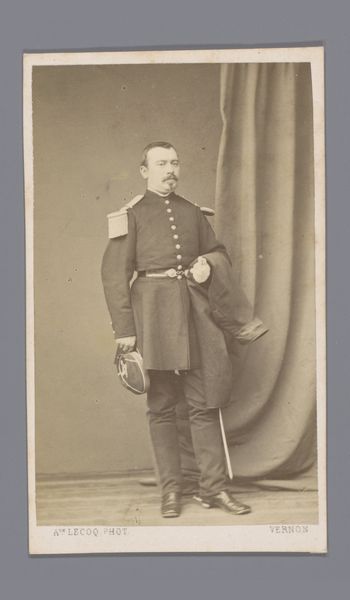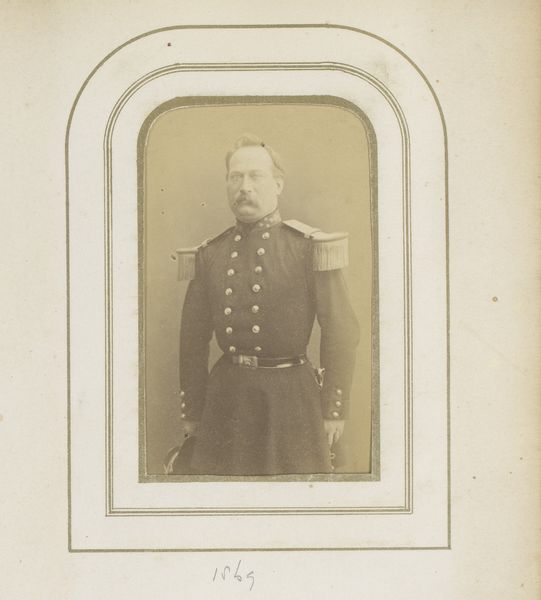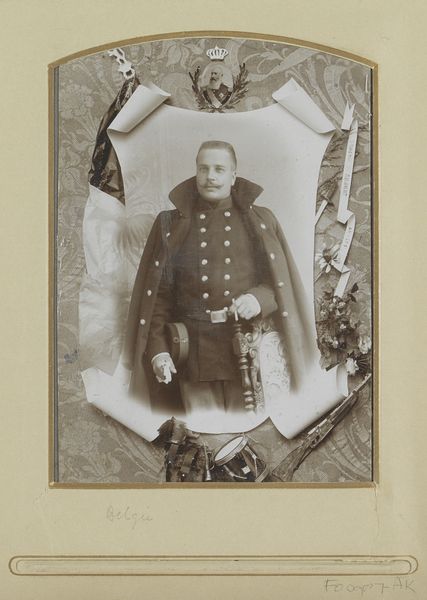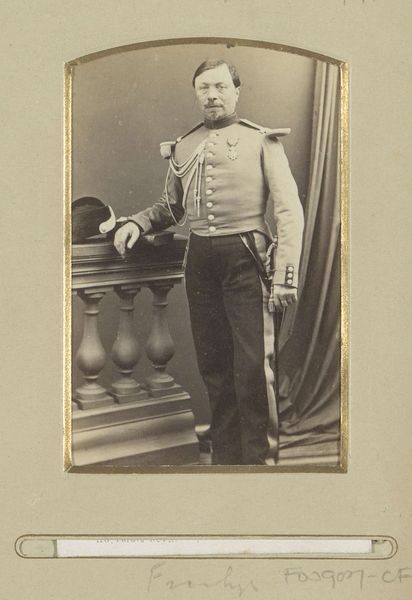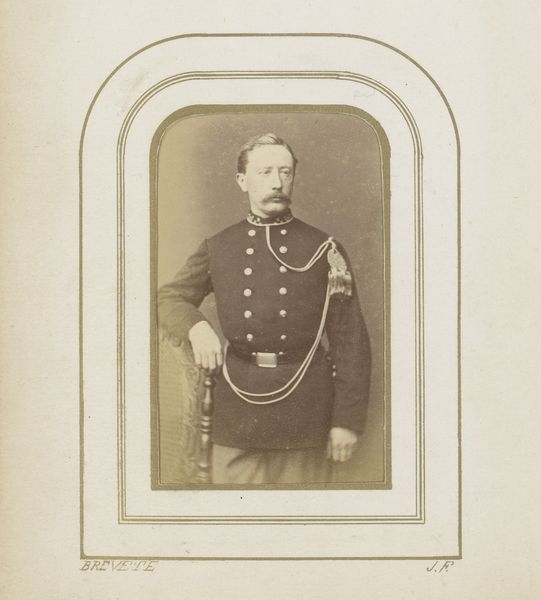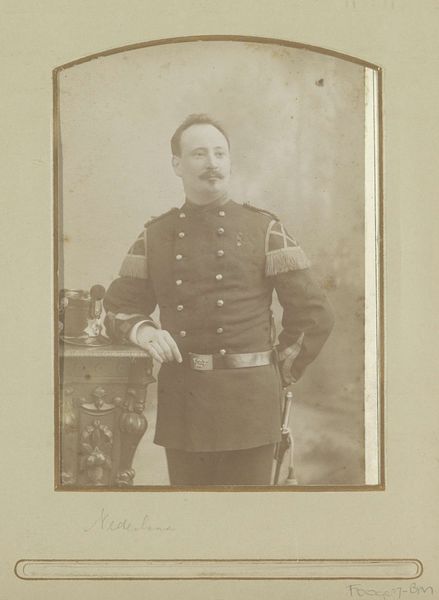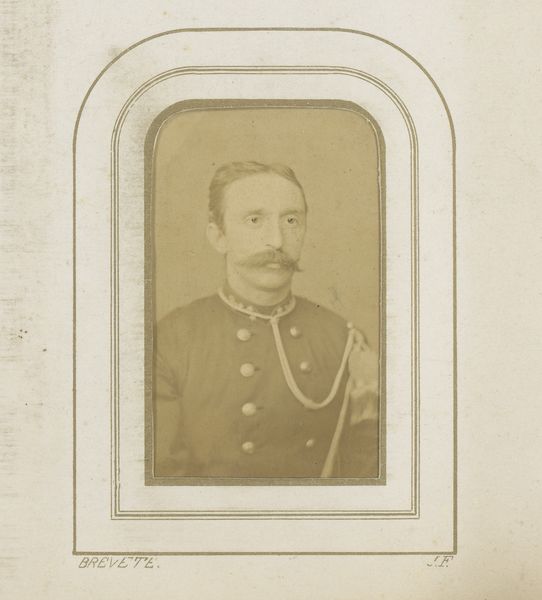
Portret van een (vermoedelijk) Duitse militair, staand naast een stoel c. 1870 - 1900
0:00
0:00
photography, gelatin-silver-print
#
portrait
#
archive photography
#
photography
#
historical photography
#
gelatin-silver-print
#
genre-painting
#
history-painting
#
realism
Dimensions: height 100 mm, width 61 mm
Copyright: Rijks Museum: Open Domain
Curator: This intriguing photograph, taken between 1870 and 1900 by A.L. Knackstedt, is titled "Portret van een (vermoedelijk) Duitse militair, staand naast een stoel" – or, "Portrait of a (Presumably) German Military Man, Standing Beside a Chair." It's a gelatin silver print. Editor: My first impression is how much the sepia tones lend a melancholic weight to what is clearly intended as a display of power and authority. There's something undeniably human and vulnerable lurking beneath the uniform. Curator: Absolutely, it’s a compelling tension. Look at the way the ornate chair is staged – almost as if it's an extension of his status, yet he only leans casually upon it. The studio backdrop, too, suggests an attempt to ennoble the setting, which falls rather flat. It's a photograph striving for realism, with overtures of genre and history painting, but its medium inherently speaks to a different truth. Editor: Indeed, focusing on the material conditions, one has to consider the economic and social implications of photography at this time. A studio portrait was still a luxury, a means of asserting one’s place in society. His medals, his finely tailored uniform... each a visible symbol of investment and labour. What would he have made or done to achieve this portrait? Curator: It's a good point. What strikes me is how still everything is. The background is just a flat theatrical backdrop, devoid of life. Even he seems stiff and constrained, his pose studied. Editor: Stiff, but also very… contained. The pose is not overtly aggressive. One could argue it suggests more about the restrictions placed upon masculinity within a particular class structure than true power. I also can't help but wonder about the chair. Did he request that chair? Did that photographer only have the one incredibly ornate chair, perhaps signaling an aspiration toward the truly wealthy classes who did not deign to sit in photography studios at all? Curator: Perhaps he sought immortality through this carefully constructed image, only for us to see the imperfections. To look beyond the staged power and ponder the complex reality of a man positioned within the machinations of empire, but so carefully set forth with the chair, the uniform and its material constraints. It reveals far more than it perhaps intended. Editor: Precisely, a poignant reminder of how the simplest material artifacts can unlock vast narratives when critically examined, leaving behind questions for both our present and for our history.
Comments
No comments
Be the first to comment and join the conversation on the ultimate creative platform.
